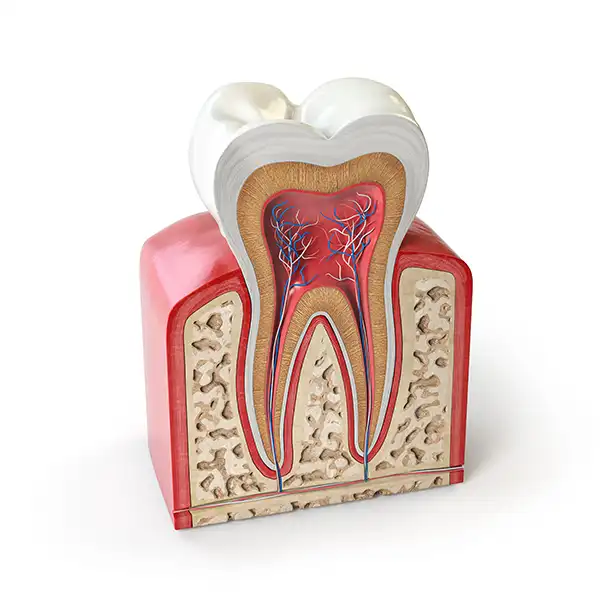Root Canal
Dentist McHenry, IL
 When you have tooth decay, there are several options for treating the condition. Unfortunately, severe decay sometimes results in tooth extraction. However, we can provide a root canal treatment in order to save your tooth. It is one of the more invasive treatments that we provide at McHenry Smile Center, but it allows us to preserve the natural tooth. If you notice any swelling, pain, drainage, or other symptoms of infection, give us a call right away. When you have tooth decay, there are several options for treating the condition. Unfortunately, severe decay sometimes results in tooth extraction. However, we can provide a root canal treatment in order to save your tooth. It is one of the more invasive treatments that we provide at McHenry Smile Center, but it allows us to preserve the natural tooth. If you notice any swelling, pain, drainage, or other symptoms of infection, give us a call right away.
Preparation
Root canals are required when the dental pulp is infected. This is a substance found inside of the tooth that contains blood vessels, nerves, and connective tissue. Without treatment, you could face a serious infection of the gum and other areas of the mouth.
We first need to get an x-ray of your mouth to determine the extent of the damage. We need to check if the bone has been affected or if the infection is still contained to the dental pulp. Before we begin, our dentist will apply a local anesthetic to the area. This is not often needed, since the infection kills the nerve and blocks pain signals. However, our patients generally feel calmer if an anesthetic is used. Our dentist will also place a dental dam over the tooth. This is a rubber sheet designed to protect the tooth from saliva and other debris during surgery.
Removing Infected Tissue
To begin, our dentist drills a hole into the tooth in order to access the infected area. Through this hole, we remove the dental pulp, bacteria, and any other debris that fills the cavity inside the tooth. We use root canal files, which vary in size, to accomplish this. Throughout the procedure, we use water or a sodium hypochlorite solution to flush debris from the tooth.
Depending on how severe the infection was, we made need to wait a week or so before the tooth can be permanently sealed. In some cases, our dentist must place a medication inside the tooth to clear the infection first. For more minor infections, we may be able to seal your tooth on the same day as the root canal procedure. If you need to wait, we will give you a temporary filling to protect the tooth in the meantime.
Sealing the Tooth
We use a mixture of sealer paste and a substance called gutta-percha, which is a rubber compound, to fill the tooth. We generally use a dental cement to fill the access hole. To finalize treatment, we need to place a permanent restoration on your tooth.
The most common restoration is a dental crown. This is a cap placed over the tooth to prevent damage and further infection. Dental crowns can be made of several different materials including gold, silver, ceramic, composite resin, and porcelain-fused-to-metal (PFM). PFM crowns are great choices if you are concerned about both look and function.
Because these restorations are permanent, you can treat them as you would your natural teeth. So, you can clean them normally and not worry about eating with them. For more information on root canals and restorations, call (815) 578-1000 today. |